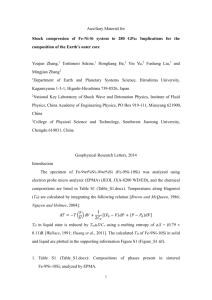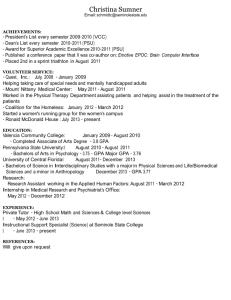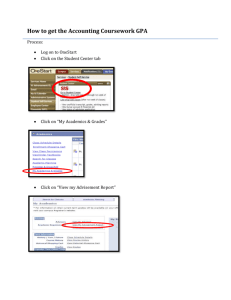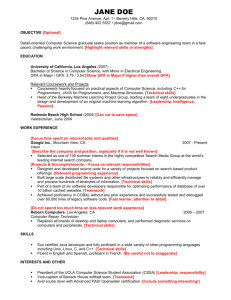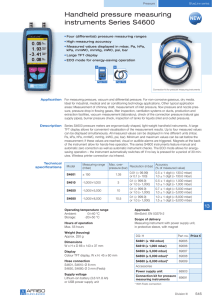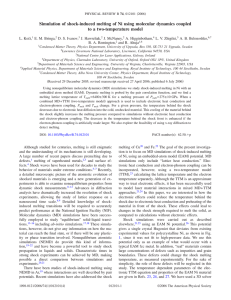Shock compression of molybdenum to 5 Mbar
advertisement
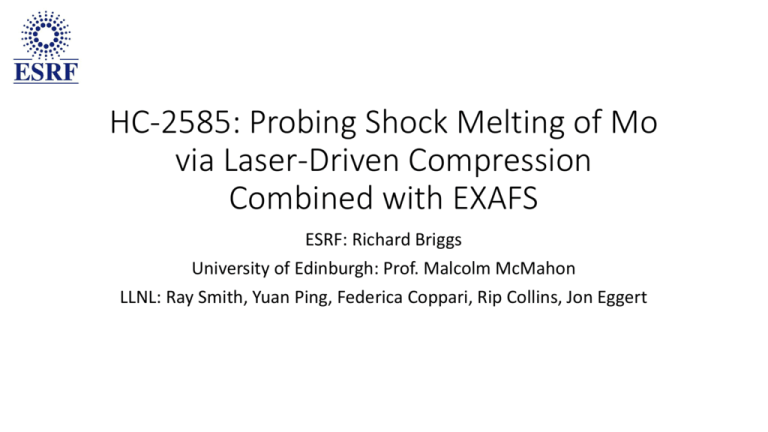
HC-2585: Probing Shock Melting of Mo via Laser-Driven Compression Combined with EXAFS ESRF: Richard Briggs University of Edinburgh: Prof. Malcolm McMahon LLNL: Ray Smith, Yuan Ping, Federica Coppari, Rip Collins, Jon Eggert Scientific background: • Melting curve from LH-DAC < 3500 K • Shock melting observed above 350 GPa and ~ 10,000 K • Abrupt change in sound velocity above 210 GPa (usually indicative of melting) and at 390 GPa from previous shock data • New shock data (with XRD) and ab initio MD calculations now suggest no kink at 210 GPa, agree with a kink at 390 GPa Al | Mo | Al (for window demonstration) <90% <10% 1 ns timing window* <10% Small amount of material either ambient or released to a lower pressure • Steady shock? Would need Al|Mo|LiF shots with VISAR • Large release wave at the Mo|Window interface • LiF, C, CH, Al will all induce a large drop in pressure • Release wave will reduce pressure rapidly within the Mo; no confinement What would XANES/EXAFS signal look like with < 10 % material at different P? Al | Mo | Ta 1 ns timing window* • Ta layer would still result in a small release in the Mo, but much smaller P drop. • Reduced signal for XAS. Al | Mo | Au 1 ns timing window* <10% <90% P-T coverage 30 um CH + Al Flash 350 µm (phase plate) Laser intensity (TW/cm2) Pressure (Mbar) 0.5 0.3 1.0 0.6 1.5 0.95 2.0 1.2 4.0 2.0 220 µm focused beam Laser intensity (TW/cm2) Pressure (Mbar) 10 (~ 35 J) 4 5 (~ 16 J) 2.5 P-T coverage 30 um CH + Al Flash 350 µm (phase plate) Laser intensity (TW/cm2) Pressure (Mbar) 0.5 0.3 1.0 0.6 1.5 0.95 2.0 1.2 4.0 2.0 220 µm focused beam Laser intensity (TW/cm2) Pressure (Mbar) 10 (~ 35 J) 4 5 (~ 16 J) 2.5
